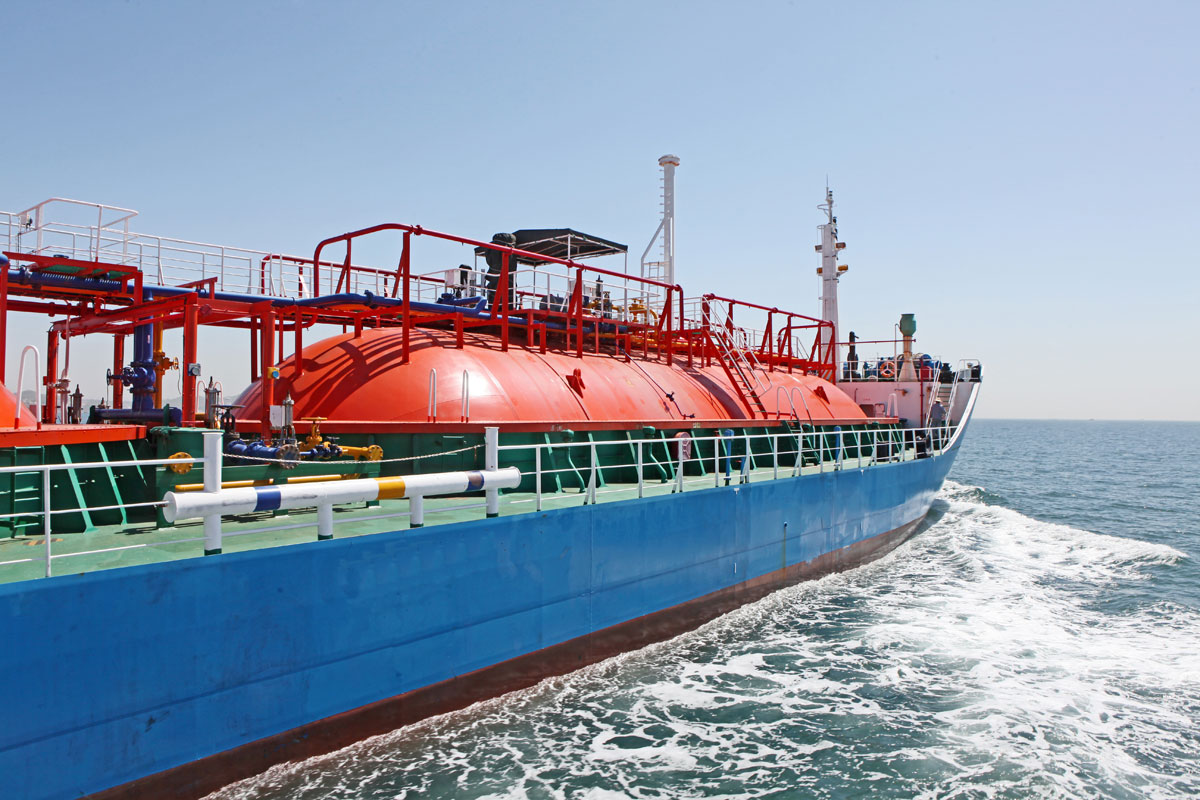First Gas from U.S. to India
A significant milestone will be achieved this month in the emerging energy partnership between India and the United States. After crude oil, India will shortly receive its first LNG from America, writes Siddharth Srivastava.
The cargo from Cheniere Energy’s Sabine Pass LNG export facility in Louisiana was loaded on to state-owned GAIL’s chartered LNG ship ‘Meridian Spirit’ on March 5. Under the sale purchase agreement signed in December 2011, GAIL, India’s biggest gas distribution company, will buy about 3.5 million tons per annum (mtpa) of LNG from Cheniere’s Sabine Pass for the next 20-years. GAIL has also booked another 2.3 mtpa capacity at Dominion’s Cove Point liquefaction facility.
“With supplies from the US, GAIL will have a diversified portfolio both on price indexation and geographical locations. This long-term pact will strengthen GAIL-Cheniere and India-US trade ties,” B.C. Tripathi, chairman & MD, GAIL, said.
“This supply marks start of long and productive relationship between Cheniere and GAIL,” Cheniere CEO Jack Fusco said. U.S. Energy Association (USEA) Executive Director Barry Worthington said the shipment is important as it means security for the world’s third largest energy consumer. “Natural gas comprises about 6% of India’s energy mix, while its government is taking steps to move closer to 15% within five years. As India tries to secure energy supplies and reduce emissions by using more gas, US is a logical energy partner.”
India, it may be recalled, is targeting to double share of natural gas in its energy consumption basket which will require imports from diversified geographies. In keeping with demand, India’s LNG imports are projected to overtake China and will edge closer to top importer Japan. At least 10 new LNG terminals are being built on the east and west coasts by state-owned and private entities to meet the expected inflows of LNG. GAIL and Petronet LNG that is part owned by national oil companies, will be two entities that will import bulk of the LNG.
Questions About Contract
There has been criticism that GAIL may have mishandled the contract with Cheniere due to absence of exit clause. Hence, it has not been able to renegotiate the agreement following the steep drop in gas prices due to excess supply last year.
Calculations show gas from U.S. will cost about $4 per mmBtu (metric million BTU) more than spot LNG purchased from nearby Asian markets that avoid liquefaction and long-distance transport charges. LNG from the U.S. will cost $9.50-10 per mmBtu, while gas in Asian markets is available at $5.50-6 per MmBtu.
Due to excess supply of LNG, New Delhi has renegotiated LNG rates with Qatar, Australia and Russia resulting in significant savings in India’s import bill, but has failed to do the same with U.S. In late 2015, India renegotiated rate for 7.5 mtpa of LNG contracted from Qatar. In October, Tripathi said India will renegotiate rate of LNG contracted from the U.S. and Russia to reflect demand-supply realities, after getting Qatar and Australia to lower gas price.
In December, India’s minister of oil and natural gas Dharmendra Pradhan said GAIL is renegotiating its LNG purchase deals with Cheniere Energy and Dominion Cove Point. Media reports said GAIL is looking to cut landed cost of LNG to $7-8 per mmBtu as against $9.70 per mmBtu. In January, GAIL said it has renegotiated the terms of long-term LNG purchase deal with Russia’s Gazprom. India’s ministry of oil and natural gas has, however, defended GAIL’s US contracts. As per the officials, there has been a hardening of LNG prices over the recent past due to which the situation now cannot be compared to last year.
Also, the strategy behind sourcing LNG from multiple geographies opens the prospects of dealing with more suppliers due to swap arrangements that are being worked out. This eliminates high transportation costs from U.S. making the landed cost of LNG the same as any other Asian or Middle East supplier. Officials also say it is incorrect that India is ignoring LNG supply deals in the neighborhood including Malaysia and Myanmar, citing example of Petronas, the world’s third biggest LNG supplier, that signed its first term agreement with an Indian entity in February.
India Could Have Done Better
The first gas shipment to India underlines emerging importance of U.S. as the world’s largest natural gas producer, a leading supplier of LNG, and possibly the largest producer of crude oil soon. Last October, India imported its first shipment of crude oil from U.S. that had stopped oil exports in 1975. The ban was lifted by former President Barack Obama in 2015 in the wake of increased domestic production of shale oil and gas. Energy partnership with the United States opens a new geographical frontier for India to source its oil and gas needs. India has been looking at USA, Russia and Australia to reduce dependence on Middle East for its fossil fuel needs, specifically, Qatar for gas and Iraq, Saudi Arabia and Kuwait for oil. However, despite the arguments of officials, the fact remains that GAIL has been unable to renegotiate the agreement only with U.S., requires introspection.
India will perhaps need to recalibrate the way it needs to deal with U.S. given the aggressive and protectionist tone set by the administration under President Donald Trump that is keen to promote the country’s business interests.


